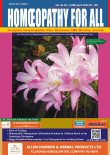Tennis Elbow and its Homoeopathic Management
Keywords:
therapeutic, Tennis elbow, painfulAbstract
Tennis elbow is the painful condition that occurs due to over burden of elbow tendons. It is also known as Lateral epicondylitis. People who do not play tennis can also suffer from this condition. In fact only 5 % of people who plays tennis suffering from it.1 Apart from the tennis players, it is seen in carpenters, painters, and plumbers. It is usually presented with pain and tenderness around the common extensor origin of the elbow. If we look back, Runge2 in 1873 was the first who described about Tennis Elbow and Henry Morris3 eventually gave its name ‘Lawn Tennis Arm’ in his writing in the Lancet. 1-3% of adult population is estimated to suffer from Tennis elbow each year. Tennis elbow is 7 times more common than golfers elbow (medial epicondylitis).4 It is caused by repeated micro trauma and failure of the healing process in the soft tissue attachments of the extensor carpi radialis brevis, origin of occupational or sporting activities. Prevalence of tennis elbow is identified in patients from 12 to 80 years of age. Age group between 30 - 60 years is 19% prone for the development of tennis elbow.5 Steroidal and non steroidal anti-inflammatory drugs (NSAIDs) along with physiotherapy is considered in the conventional treatment. NSAIDs are having harmful effects on vital organs. It has been reported clinically that such injuries are not completely healed by such measures. Homoeopathic medicines can be beneficial to speed up the recovery. In this article, we will briefly go through the literature on efficacy of homoeopathy in sports injuries along with its therapeutic indication.
Downloads
References
https://timesofindia. indiatimes.com/tennis-elbow
a-common-muscle-misery/ articleshow/54459410.cms
Runge F. Zur Genese und Behandlung des Schreibekrampfes. Berliner Kim Wchnschr 1873; 10:245-8
Morris H The Rider’s Sprain The Lancet II, 1882
Cutts, S.; Modi, Nitin; Gangoo, Shafat; Pasapula, Chandra (2019). Tennis elbow: A clinical review article. Journal of Orthopaedics, (), S0972978X1930248X–. doi:10.1016/j.jor.2019.08.005.
Tanusree et al, Comparative efficacy of wrist manipulation, progressive, exercises, and both treatments in patients with tennis elbow.www.ijhsr.org., April 2018; 8: 4.
Coombes BK, Wiebusch M, Heales L, Stephenson A, Vicenzino B. Isometric exercise above but not below an individual’s pain threshold influences pain perception in people with lateral Epicondylalgia. The Clinical journal of pain. 2016 Dec 1;32(12):1069-75
https://www.physio-pedia. com/Tennis_Elbow_ Management#cite_note-15
W. Boericke, New Manual of Homoeopathic Materia Medica & Repertory [with Relationship of Remedies], Second Re
Augmented & Revised Edition Based on Ninth Edition, Reprint Edition 2002, B. Jain Publishers, New Delhi.
J. H. Clarke, Dictionary of Practical Materia Medica, Reprint Edition 1992, B. Jain Publishers, New Delhi.
F. Schroyens, Synthesis Treasure Edition 2009V, RadarOpus 1.33 (Homoeopathic Software), Archibel S.A. Rue Fontaine St.
Pierre 1E, Zoning Industriel de la Fagne, 5330 Assesse, Belgium 11 Hering's guiding symptoms of our Materia Medica By Calvin B. Knerr, M. D. B Jain Publishers Pvt Ltd; New Delhi 12 Dr. P. N. Varma, Kusum Yadav,Ramachandran Valavan, A Compendium of Rare and Clinically Established Mother Tinctures, 4th Edition, Dr. Willmar Schwabe India Pvt. Ltd., A-36, Sector 60, Noida.




